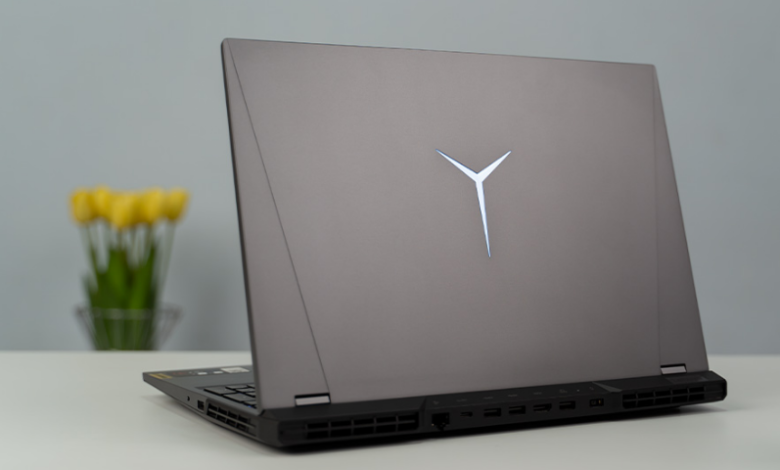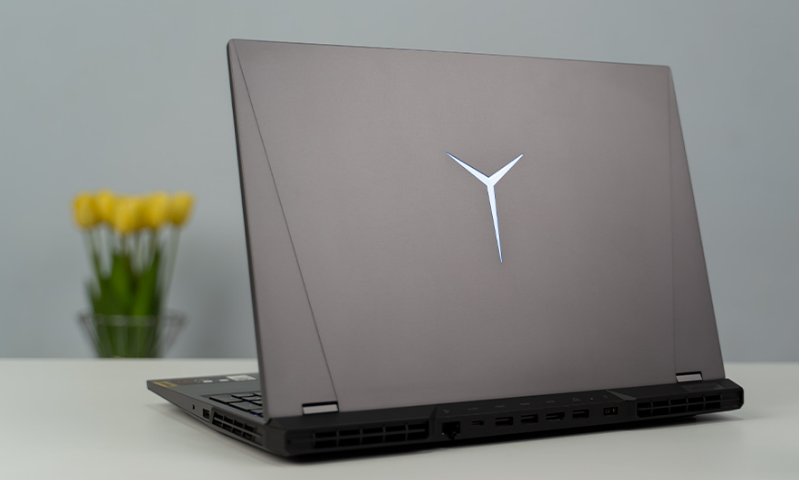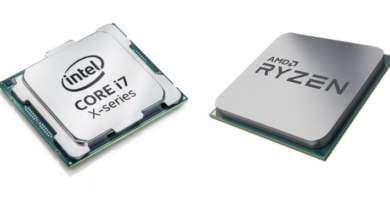Review of the Lenovo Legion 5 Pro laptop

Review of the Lenovo Legion 5 Pro laptop: This notebook is part of Lenovo’s gaming lineup, but with the Pro suffix, it’s also intended for business use. It makes perfect sense when you consider its unique display specifications, and many people use the same laptop for both work and play.
This laptop has the right components for both applications. Nvidia’s GeForce RTX 3070 is an advanced GPU in mainstream settings, and the Ryzen 7 5800H is a familiar CPU that’s proven itself in content-creation tasks and games. We received a review sample that cost $1,599, and it features 16GB of DDR4 memory and a 512GB SSD.
Design and features
Lenovo’s display is the clearest indication of this notebook’s ability to handle both professional tasks and games, simultaneously. There is a 16:10 aspect ratio, which is more common on professional laptops than on gaming devices. It makes lots of sense in both scenarios.
When compared to 16:9 panels, this extra vertical space makes it easier to navigate websites, office apps, and other tools. The display keeps impressing me. The display continues to impress. In contrast with Full HD displays and 1440p panels, it offers a crisper image at 2,560 x 1,600.
It’s also a good move to use 16″ as a diagonal – it provides a bit more immersion and space than a 15.6″ notebook without the sheer size of a 17.3″. 26.8 mm thick and 356 mm wide are the dimensions of Lenovo Legion’s 16-inch laptop. Lenovo’s standard 15.6″ laptop is only 7mm narrower and half a millimeter thicker than that.
These are fantastic numbers, and Lenovo can fit the screen inside a relatively compact chassis thanks to slim display bezels. The Legion’s gaming credentials are bolstered by NVIDIA G-Sync and 165Hz refresh rate. Even mainstream single-player games run smoothly at that frame rate, and esports can be played smoothly with that as well.
Performance of the Display
Good quality can be found in the Legion’s tall display. This laptop delivers a 1,300:1 contrast ratio thanks to its brightness of 546cd/m2 paired with a black point of 0.42cd/m2. It can handle many indoor and outdoor situations.
This display provides impressive vibrancy and nuance due to its brightness and contrast ratio, especially in bright areas. It would be beneficial to have a deeper black point to provide additional depth in gaming’s darkest corners, but it isn’t a deal-breaker and shouldn’t affect gameplay. This display’s delta E is 1.28 and its color temperature is 6,244K, which means that human eyes will be unable to detect slight color variations.
Moreover, it provides nearly all colors required for mainstream games and creative applications at 99.9% volume, which means it does not become highly saturated. The panel could only produce 68.4% and 70.2% of the Adobe RGB and DCI-P3 color spaces, respectively. Lenovo isn’t up to the task of rendering HDR content or working with Adobe’s wider color model. Its display, however, impresses in most departments.
Compared to most laptop monitors, the panel is more expansive due to its high resolution and taller aspect ratio. If you want to do creative work or play high-end games, you may want to go higher. In the event that esports are more your style, you might want to consider a display that runs at 240Hz or 360Hz.
Build quality and input
They have plenty of volume and some decent bass, and they’re good for media and gaming. Still, the midrange sounds too muddy, so I would recommend a headset. This 16-inch laptop from Lenovo doesn’t just have a 16-inch display crammed into a 15.6″ chassis, it also packs a keyboard and a number pad. A number pad is not always included with gaming laptops, so this is a welcome addition.
There are full-size cursor keys on the Legion 5, as well as a double-height Return key. Additionally, the power button is discretely placed above the keyboard, preventing accidental pressing.
This keyboard has slightly concave keys that improve comfort, are fast, comfortable, and decent – they’ve got 1.5mm of travel and a solid base. The buttons on these notebooks are also considerably quieter than those found on most gaming notebooks. You can use it for typing or gaming for a full day.
There’s no RGB backlighting for each key on the Lenovo, however. Corsair iCUE lets users customize four-zone RGB backlighting on certain models, but we received a review sample that only has white backlighting – and the illumination isn’t very strong. The Lenovo touchpad, however, is disappointing.
The pad sits too far to the left edge of the machine, and the click buttons are too soft. Because of this, if you use the left-hand side of the keyboard for gaming, it is very easy to jog the pad. You’ll need a USB mouse for laptop gaming, as usual.
Featuring gunmetal gray aluminum and plastic with RGB lighting only on the lid, the Lenovo Legion 5 is built from a mix of aluminum and plastic. This laptop can straddle the boardroom and the gaming room, as some may call it subtle, and others may call it boring.
Other practical aspects of the Lenovo are good. There’s no movement in the wrist-rest or screen, and it’s stable on the underside – we have no complaints about the build quality. The notebook’s 26.8mm thickness and 5.6 pounds weight are average for a 16″ notebook.
Though the Lenovo’s hefty power brick adds 1.7 pounds to the overall package, taking it to gaming events or the office shouldn’t be a problem. You get decent connectivity. You’ll also find a USB 3.2 Gen 1 port and privacy slider for the 720p webcam here.
DisplayPort is connected to the USB 3.2 Gen 2 Type-C port on the left. The Lenovo’s ports are located mostly on its rear, which is handy for cable management, and here the company uses two USB 3.2 Gen 1 ports alongside one full-size USB 3.2 Gen 2 port that delivers 5V continuous power – perfect for charging phones and gamepads. There is another USB 3.2 Gen 2 Type-C/DisplayPort port on the rear to allow it to charge or supply 5V of power.
A Gigabit Ethernet port and a HDMI 2.1 port with support for 4K/120Hz are also provided for dependable gaming. The Gigabit Ethernet connector is inside along with dual-band 802.11ax wireless and Bluetooth 5.2. A conventional Phillips screw allows you to remove the base, and on the inside you’ll find memory slots and M.2 connectors. There are a lot of good features, and the only things missing are card readers and fingerprint readers.
Thermals
Thermal and acoustic performance are reasonable despite the slightly subdued CPU performance. During single and multi-core benchmarks, Lenovo’s peak noise output was 36db in balanced mode, which is very quiet and easy to manage.
In Performance Mode, the machine’s noise output increased to 45 dB during a work test. While this is more obvious, it is not bad, and a headset or a busy office can easily drown it out. It is a tad hot for the CPU to reach 93C, but the outside of the notebook remained cool, and hot air was still ejected from the back.
In Balanced Mode, we measured 42db of noise produced by the laptop – which is a little quieter than most gaming machines and easy to manage. When this machine stays rooted to the desk, it doesn’t matter that it became hot on the underside. During gaming tests, the laptop’s Performance Mode cranked up the sound to 48db.
This is loud enough that you will notice the laptop, but it’s not the worst we have seen – a top-of-the-line Asus ROG laptop we tested last year tops out around 55db. However, we don’t think it’s worth it to generate all of that extra noise just to increase game frame rates a little. It was quiet when it was running workloads, peaking at a tiny 37db during games tests.
Although impressive, it does limit performance, so it is unsuitable for high-intensity tasks and casual games. The Lenovo’s battery life isn’t surprising. Regardless of what display brightness settings we used, it lasted just under 90 minutes when gaming, and the laptop’s GPU performance is also diminished when it’s running on battery power.
This machine is not recommended for long gaming sessions far away from a power source, as is the case with most gaming laptops. Lenovo’s laptop lasted for 3 hours and 44 minutes at 50% brightness, while tackling work tasks.
This is generally reasonable, and switching to the hybrid mode, which uses integrated graphics, saw the battery life increase to six hours. For a gaming notebook, that’s great, but you’ll only get that kind of performance from it when you don’t need the GPU, and it won’t survive a full day of work without a power adaptor.





